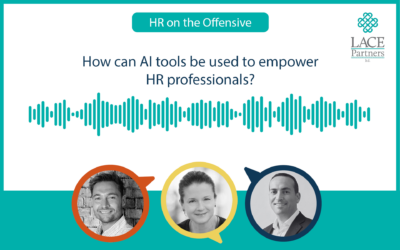Over the last three months our team have been drilling down into some of the most pressing concerns of Chief People Officers / Chief Human Resources Officers to find out what HR’s ‘One Big Thing’ is. We’ve run a host of events, podcasts, as well as blogs and short videos, which will include a ‘fireside chat’ reflecting on what has been found out. Ahead of those videos released next week, we’ve summarised some of the most interesting discussions that we have found from speaking to CPOs, clients, as well as the rest of the team.
Quick recap – top three defining issues from our report
We asked the CPOs for the one issue that’s taking their focus. And naturally, everyone responded with more than one. After examining the results holistically, we came up with the three main challenges for HR:
-
Talent – attraction, development and retention
-
Hybrid/remote working
-
Employee Value Proposition (EVP)
Other topics, such as digital transformation and Diversity, Equity and Inclusion (DE&I) made the top 10 and, of course, remain important. But today we will focus on the top three.
How surprising were the top three?
In short, not very. In fact, if we hadn’t reached out to CPOs and had created our own top three, it would have been very similar. And while we may have expected the intersection of people and tech to have been mentioned, it makes sense, given technology underpins all of these anyway. Technology provides us with part solutions to all these challenges.
The hybrid conversation was particularly prevalent towards the end of 2022, with mainstream media picking up the often-conflicting views on how this should now be managed in a post pandemic world.
Hybrid working– the silver bullet for productivity issues?
The pandemic broke all kinds of bad habits across the global workforce and forced us all to really think about where and how people work. The forced shift towards a totally new way of working left many organisations scrambling to make it work, but make it work they did.
If organisations can react that fast and implement totally new ways of working, communicating, interacting and doing business, then this could be a game-changer for permanently fixing productivity issues.
Data shows that remote working goes hand in hand with increased productivity with multiple studies showing this, from before, during and after the pandemic. However, we’re still seeing some old school command/control hierarchical organisations now insisting on going back to the old ways.
For example, the legal profession initially tried to get everyone back in the office five days a week and were forced to think again after employees rebelled. We are at a real inflexion point in how we work going forward and old-fashioned organisations are going to have to find ways to adapt.
For now, some organisations remain in a state of flux, not quite knowing which way to go. Off the back of the pandemic, many are still trying to find that structure and control. Rather than going back and looking at the way that activities can and should be distributed, some are focusing on clawing back to old ways.
Ultimately, the ball is in the employee court today in a way it never really has been before. The pandemic has created opportunities for employees to take more control over what they want to do and where they want to do it, and if they don’t find it at their current organisation they’re prepared to leave and go elsewhere.
It has to be about a mindset shift now and a new appreciation for the skills and unleashed potential that the pandemic allowed. Organisations are experimenting to find ways that it will work for their own culture and their own performance. Business leaders are looking for ways to comfortably adapt and be flexible without compromising what they see as traditional work patterns.
And this is where HR needs to level up to build flexibility and adaptability into the entire operating model – from policies and technology to processes and culture. Simple initiatives such as the introduction of candid on site conversations with front line employees can build the kind of two-way communication that can really help organisations break down barriers and work more effectively and efficiently.
Read more from our hybrid working ‘silver bullet’ series here and here.
EVP – what even is it?
Some of the challenges we have surrounding EVP is simply that many people don’t understand what it is – or at least what it can be. It should be thought of as the offering that an organisation gives to prospective employees, current employees and candidates – essentially the same as a customer value proposition but facing inwards.
In other words, it needs to be much more than a box ticking exercise and a marketing ploy for the website. An effective EVP must translate into the lived employee experience. So many things are happening right now to make EVP more of a priority. If you want to watch a short video on he questions you should be asking yourself when it comes to your EVP, here’s Cathy from our team explaining in one of our 60 second videos.
The pandemic has refocused business on what’s truly important – the people. And while it’s a big challenge for organisations, given the difficulty in even defining what it means, the way it manifests is so important.
Organisations can struggle with EVP as they see it as a physical product. It’s actually more like a living organism. It grows, changes and fluctuates and, to be successful, must adapt along with employees.
For example, right now the UK is dealing with a sustained and challenging cost of living crisis – now is the time for organisations to relook at their EVP and figure out whether they can be doing more for their employees’ financial situation or their mental health. Our world is constantly changing, and the EVP must change along with it. Otherwise it really is just a marketing exercise with no real value.
Read more about EVP in our blog on how your EVP needs to constantly evolve.
Top of the list – talent attraction and retention
We’ve been through a couple of years of buzzwords with talent – the Great Resignation, quiet quitting among them – and now we’re well into the next iteration. There was a spike of people coming out of lockdown and making moves to apply for new positions.
With the external pressures of the cost-of-living crisis, the ever-changing geopolitical situation and, of course, post-pandemic anxiety, we’re seeing more and more people questioning whether they want to stay in their position – or even their careers.
Retention and acquisition will continue to be the number one focus for both CEOs and CPOs throughout 2023. The pandemic opened people’s eyes to the importance of people and had the knock-on effect of significantly elevating the HR function.
In 2023, we’ve already had loads of conversations with clients about talent – how to find it, where it comes from, how to keep it for the long-term. This has brought into the spotlight organisation’s attitudes towards internal mobility as well as their acquisitions policies.
Organisations on the right track are now asking the important questions – do they have the correct policies and processes in place? Are they functionally tech-enabled to work in the most effective way? How best can they build skills and capabilities for the future?
Breaking down functional silos is key for effective internal mobility – only a very few have so far cracked this successfully. And it’s so important to future-proof your skillset. Data – and common sense – show that big layoffs are not the way forward, and instead CPOs and business leaders should be planning not just for where they are right now, but where they’ll be in 12 to 18 months.
Shedding skills during challenging times will not work for the future, there must be a mindset shift towards decision-making well ahead. It’s unsustainable to allow skilled employees to be poached by competitors.
Creating talent mobility means slowing down to speed up. It means effective strategic workforce planning (SWP) in meaningful ways. And we know this is something that many organisations avoid because it’s hard work and takes a chunk of time.
Listen in for more…
Join us next week to for our fireside chat! It prompted more debate about protirement, diversity and what it really means for talent acquisition, how disruption is here to stay, how to accelerate a new way of thinking within HR and, if all that’s not enough, we even touch on ChatGPT and the crazy potential for AI and the Metaverse.
Interested in talking to us about what your ‘one big thing’ is? Then reach out to us using the form below.






